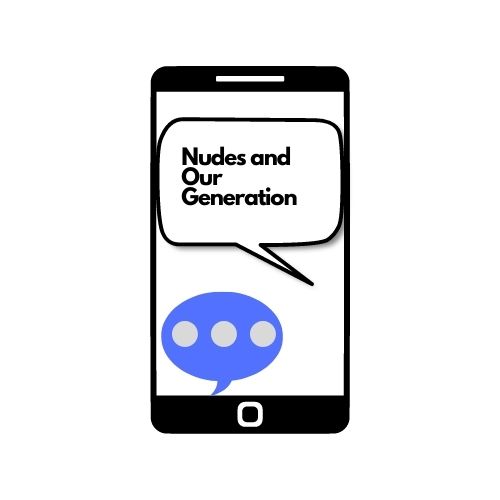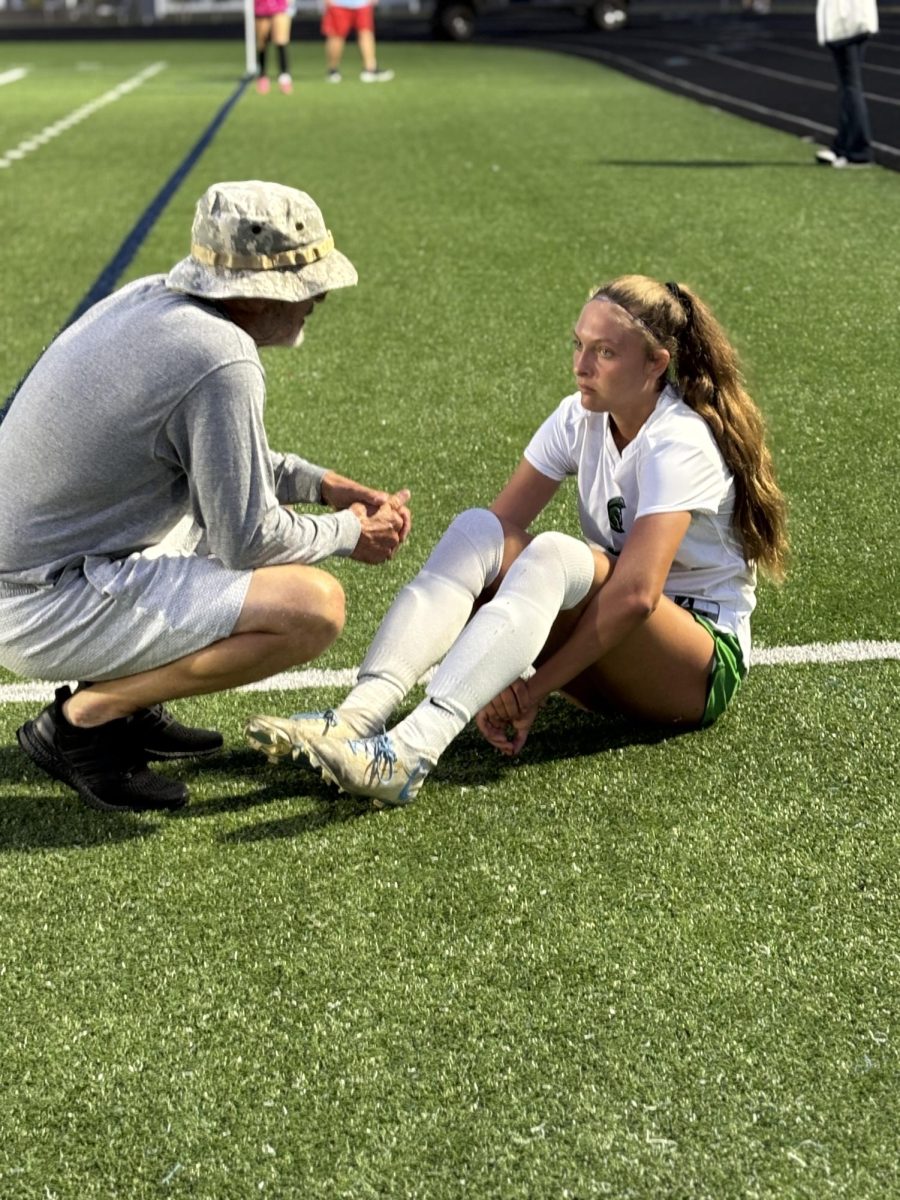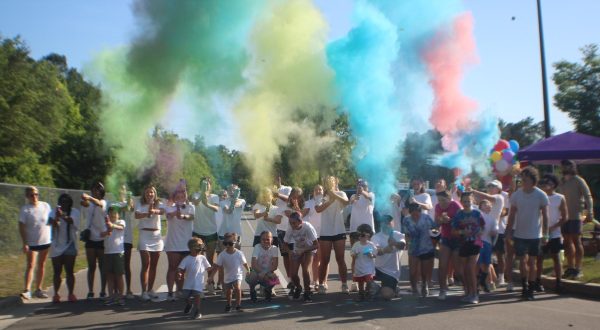Nudes and our generation

An illustration for ‘Nudes and Our Generation’
Mar 30, 2023
Photos are common in communication; whether it be pictures of our trips, or of our pets, or selfies of ourselves, we are always using pictures in conversation. However, there is another, more debated side to selfies: nudes.
There are many different things you should think about and decide before you make a decision to send them, and it should always be consensual.
“This sending of unsolicited nudes, or cyberflashing, is not only violent and pernicious, it’s entirely without consequences in 49 states,” says Payton Iheme and Christian Nunes from Marie Claire. “Exposing oneself in the street or on the subway could result in an arrest and fine; why shouldn’t doing so over DM, text, or AirDropping carry the same penalties?”
According to criminaldefenselawyer.com, “In North Carolina, sexting images of or to minors can be prosecuted under the state’s existing laws relating to child pornography and obscenity. Teens often believe that, if sexting is consensual, it’s not a crime. But that’s not how the law perceives it. Sexting images of minors—even with the recipient’s consent—can result in felony penalties and may require sex offender registration.”
Regardless of the fact that it is against the law to send nudes doesn’t mean that you can’t receive or send them. In fact, a 2018 Bumble survey found that 1 in 3 women had received an unsolicited nude photo during their lifetime: 96 percent of women were unhappy to receive them.
The most common example we see of nudes\sexting is in Gen Z and Millenials. Obviously, a lot of Gen Z are minors, which causes a lot of problems with this law. There are many loopholes that one can go through, such as lying about your age; however, this can be dangerous. You can not only get the person you are talking to registered as a sex offender but also yourself.
“Sexting is connected with trauma and violence. Youth who engage in sexting are three times more likely to experience emotional victimization and are also more likely to experience dating relationship violence,” According to Evidence Based Living. “It is also connected with bullying. One study found youth who have sent sexually suggestive photos and videos are five times more likely to experience cyberbullying.”
Despite bullying being condemned for many decades, people continue to use their biases and grudges to harm others. With nudes becoming more of a common exchange, the possibility for suggestive photos to be nonconsensually shared is becoming a major concern.
People use these images for a variety of emotional manipulation tactics, two of them being blackmail and revenge.
“Once an image, screenshot or video is distributed on social media, it can be seen by huge numbers of people in a very short period of time,” reports Cybersmile. “If explicit images or videos are seen by the victim’s peers – this could lead to them being ‘slut-shamed’ and can also potentially attract unwanted and possibly predacious attention, putting the victim in danger.”
Revenge porn is when you share someone else’s nudes on the internet without their consent or knowledge, and is a reason for online and in-person ridiculing. This is usually done by an ex partner or friend.
Blackmailing (otherwise known as sextortion) is relatively obvious in what it’s used for. It’s when someone threatens to spread the nudes that were sent to them to get what they want. It’s awful, stressful, and painfully common.
Thankfully both revenge porn and sextortion are illegal, and you can press charges, whether you gave the photos with full consent or not.
While sexting is something that is not restricted to one gender, the perception of sexting is often different between genders.
Cornell University states “For boys, participating in sexting can damage their reputation among adults, but sending and receiving sexually explicit content can also bolster the reputation of males among their peers.
The researchers found that girls’ reputations are more likely to be negatively impacted by sexting, generating feelings of disdain from adults and their peers.”
In one study taken in 2016 in the United States, it was found that 51.5% of sexting participants were males, and 48.5% were females. However, there are many factors that go into these statistics, such as environment, family, friends, partners, and peer/relationship pressure, among others.
In some cases, peer and relationship pressure are the reasons nudes are sent, especially with teenagers.
“Teenage girls sometime receive pressure to engage in sexting from their friends, because they are involved in sexting themselves. If they are in a relationship, they could be made to feel like they should be sexting because ‘everybody else is doing it’.”
However, social pressure is not restricted to just girls.
“A majority of teenage boys will participate in sexting at some point,” Cybersmile states. “If someone has a group of friends that do ‘sext’ and they choose not to – their friends could ridicule them for not participating, thinking he has ‘something to hide.’ Boys can also be pressured by their girlfriend or boyfriend to engage in sexting in the same ways that a female can be pressured.”
Nudes can often be viewed as ‘cool’ or ‘adult’, resulting in many to act impulsively or be easily persuaded into partaking in sexting, although it is possible many will end up regretting the decision.





























